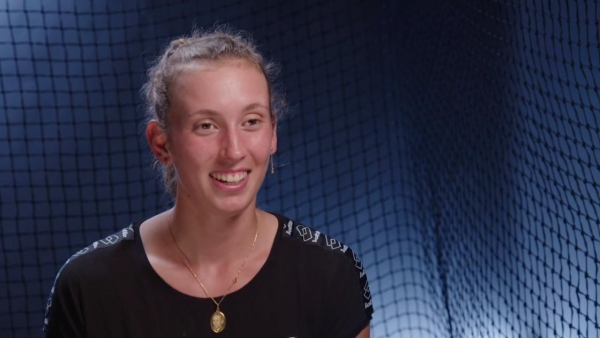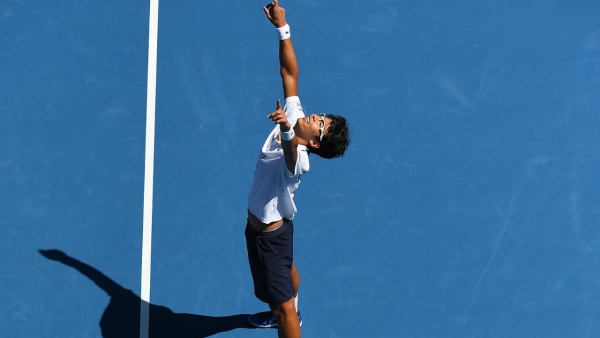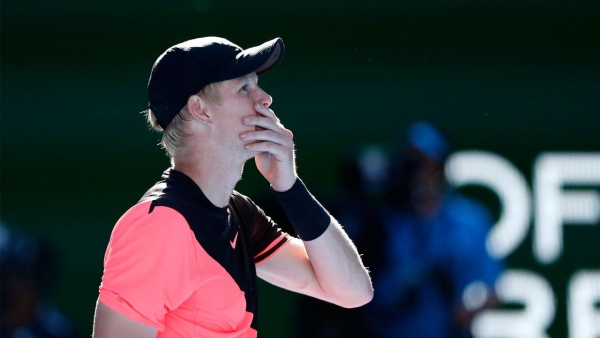So here we are then, almost at the end of the road; the destination is in sight.
It was 10 days ago that 256 travellers set out on their path to glory and fame, but now only eight remain. And of them, three are people we never expected to be there. Now, there’s a turn up for the books.
This year Elise Mertens, Kyle Edmund and Hyeon Chung (ranked, respectively, Nos.37, 49 and 58) have barged their way through the massed ranks of champions and superstars to stake their claim to a share of the limelight.
That has not happened here since 1999 when Amelie Mauresmo, Thomas Enqvist, Tommy Haas and Nicolas Lapentti reached the semifinals unseeded. That was the last time that only 16 men and 16 women were awarded a seeded berth in the draw. At the time, they made headlines – these young upstarts had disrupted the accepted order and got to the business end of a major tournament. How dare they?
But with the benefit of 20-20 hindsight, we can see that it was just the beginning of a new era. All four had long and distinguished careers (Mauresmo won two Grand Slam titles and was the world No.1) so they were no one-hit wonders. Their success that year in Melbourne may have taken everyone by surprise, but like the old saying goes: you can’t make an omelette without cracking eggs.
As of next year, though, we will revert to draws with only 16 seeds, and the move has divided opinion. There are those who believe a few upsets and dented reputations are good for the tournaments and good for the game, and then there are those who want the top players reach the finals every year.
Since 2001 when the powers-that-be decided to expand the seeds to 32 at all of the Grand Slam events, we really haven’t had too much by way of upset or surprise. In fact, come a little closer to the screen, I want to have a word with you on the quiet. No, closer still, we don’t want anyone to hear us. Is it me, or is the first week of the average Grand Slam tournament a little predictable?
In the men’s game, the Big Four have had a stranglehold on the major tournaments, Messrs Federer, Nadal, Djokovic and Murray heading for the semifinals with eye-watering regularity. The tennis has been spectacular, the rivalries intense: Roger v Rafa, Andy v Novak – we will not see the like again for many a generation. But watching the four of them steer a path through the lesser lights for the first three rounds has been … well, it has been less than heart-stopping.
Now, we all know that Roger and Rafa get bums on seats, but have you noticed the new vibe around Melbourne Park this week? People want to know who Chung is, where Edmund comes from, how Mertens got this far without anyone noticing her before. Korea is going crackers for Chung and Britain is going bonkers for Edmund, the Belgians are beside themselves about Mertens. Here in Melbourne, everyone is loving every minute of it.
The whole 32 seeds idea was meant to prevent any hint of upset or disorder (and to give the clay-court players a little more protection on the grass of Wimbledon).
Those terribly nice people in TV do a great job of filming the action and dissecting the play, but they do not like surprises. Not at all. If they can plan for Rafa on Monday, Roger on Tuesday, Serena on Wednesday, Novak on Thursday, Maria on Friday, they are happy campers. If anyone of those big names dares to lose early, they get themselves into a terrible fluster. No wonder they loved the 32 seeds idea.
But expanding the number of seeds was not the only scheme devised to keep the marquee names in business for as long as possible. Remember the ATP’s wizard wheeze to introduce round-robin tournaments across the tour? Brilliant, they thought. This way we get Roger, Rafa, Novak and Andy playing at least twice in a week and they will be around until the weekend, guaranteed. Fabulous.
The only slight hitch was that no one knew how the tournament actually worked. Andy Roddick famously announced that if he, as a professional player of many years standing, could not understand the draw sheet, then something was seriously wrong. When one tournament ended up in a draw, the idea was shelved. A grateful tennis watching public heaved a huge sigh of relief. Lovely idea to have the famous names around for longer but, please, leave the game alone.
Kyle, Hyeon and Elise are living proof that upsets are good. They are good for the new winners making their way through the draw, and they are good for the sport as a whole. And once the TV producers have stopped hyperventilating (“The world is ending – we have no Rafa on Thursday night!”), they, too, will realise that the new names making the news this week will be good for ratings in the long run.


